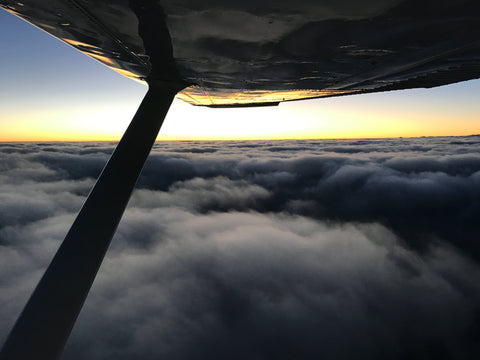5 Reasons Why Every Pilot Should Own a Flight Simulator
5 Reasons Why Every Pilot Should Own a Flight Simulator
There are many benefits to owning a flight simulator and for several of us, it’s simply the enjoyment of being in the captain’s seat and taking our mind off of things. Nonetheless, a simulator is more than entertainment and has many advantages for those who fly in the real world. We’ve put together our thoughts on the importance for a pilot to own a flight simulator.
#1 - Stay Proficient
Like any job position it’s important to stay up to speed with all the basic mechanics. If you’re a pilot, it’s necessary that you remain proficient in IFR procedures and can load a flight plan and manage the workload effectively. Being confident with this is a way of improving safety and increasing the enjoyment of your flying.
A home simulator makes a great training tool because it allows you to explore the operation of these complex systems at your own pace, in a safe environment without racking up expensive flight hours. You can practice all the things you would normally do so you can get the most out of your aircraft when you are actually flying it.
#2 - Muscle Memory
Repetition helps us form procedural memory, which allows repeated movements to become second nature to us and ultimately help in stressful situations. Instinctively knowing where to reach and the feel of the knob or button you want to use makes a real difference in high workload scenarios.
Our products make it easier to develop this muscle memory as they have identical layouts & dimensions to the real systems. Having buttons, knobs and LED indicators matched exactly to those found in the real airplane allows you to practice more effectively while developing muscle memory and not get distracted by trying to use your keyboard or mouse.

#3 - Gain Confidence
The less you fly, the harder it is to feel confident when faced with the challenging conditions of a flight. It’s important to have that assurance in yourself when your responsibility is so high and the only way to get better is practice. Real world flight training with your CFI is a key part of maintaining proficiency, but this can be effectively supplemented with effective practice at home using your home simulator. Also, maybe you’re heading to a new destination and have never been to a particular airport, with realistic scenery, foreflight integration and virtual ATC you can simulate the complete arrival, approach and landing before you ever have to do it for real which is great for situational awareness in both VFR and IFR flying.
Practicing in the comfort of your own home is a great way to maintain basic proficiency for both VFR and IFR flying. You can create inflight scenarios that are incredibly real but are definitely too dangerous to attempt in a real airplane.

#4 - Enjoy the Flying
It’s likely you choose to fly because nothing makes you happier than soaring through the sky. It’s a feeling only a few get to achieve and it’s definitely worth chasing. With fuel costs and rental prices, it can get very expensive to log in your hours when you want to fly. For some, they may not be able to leave the house or travel as much which also limits accessibility. When you own a flight simulator you can go fly whenever or wherever you want. Travel to places you’ve never been before and perform manoeuvres not possible in the real world; with Flight Simulation the world is at your fingertips.
#5 - Pass the Time
This year (2020) has been a little different than previous ones and for most people, we are looking for ways to pass the time when being locked inside.
There is no better time to invest in a Flight Simulator from RealSimGear due to the value it can bring your career or just for fun. We offer a lot of components that you can build upon in addition to complete packages that are already assembled.
Looking for more information on flight simulators, check out How to Use Your Flight Simulator For Effective Practice at Home. Also, sign up for our newsletter at the bottom of our website to get up to date information on Flight Sims.


